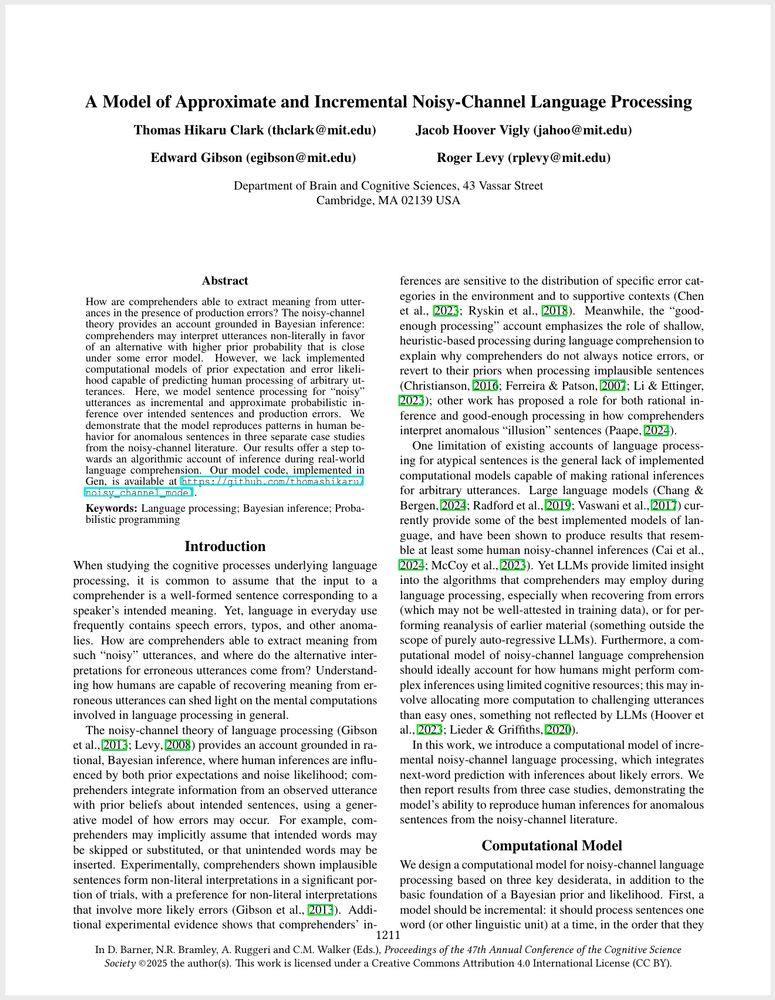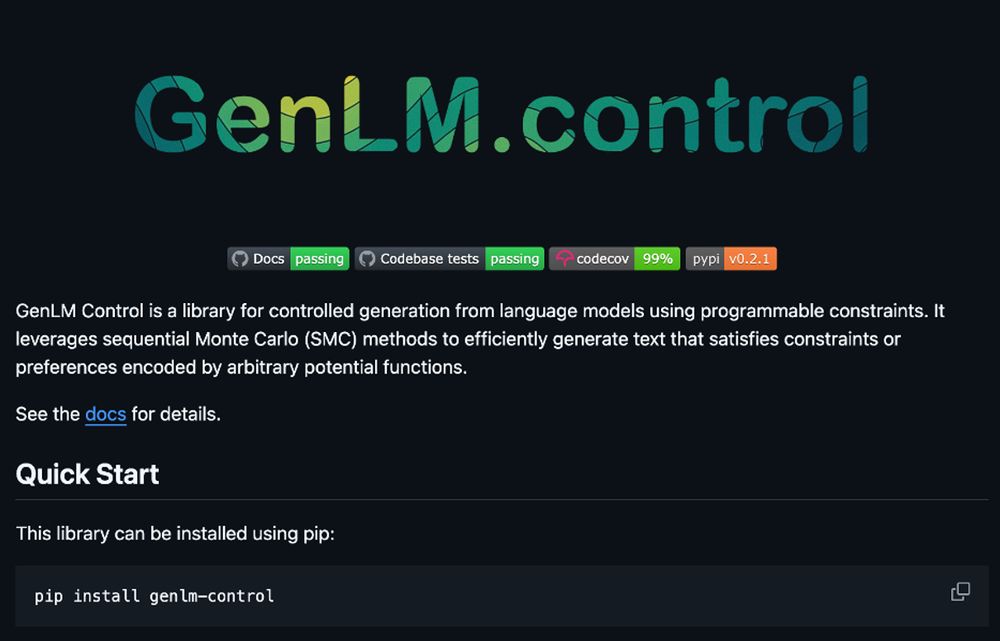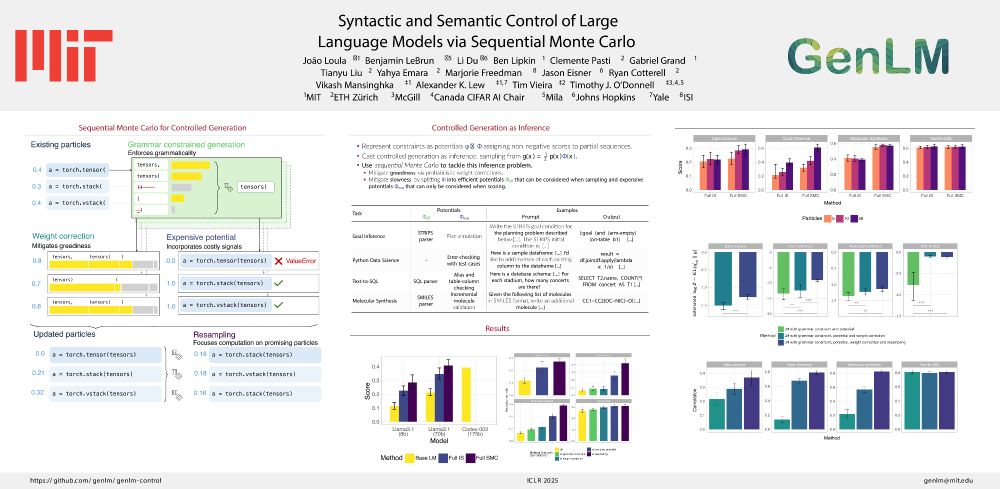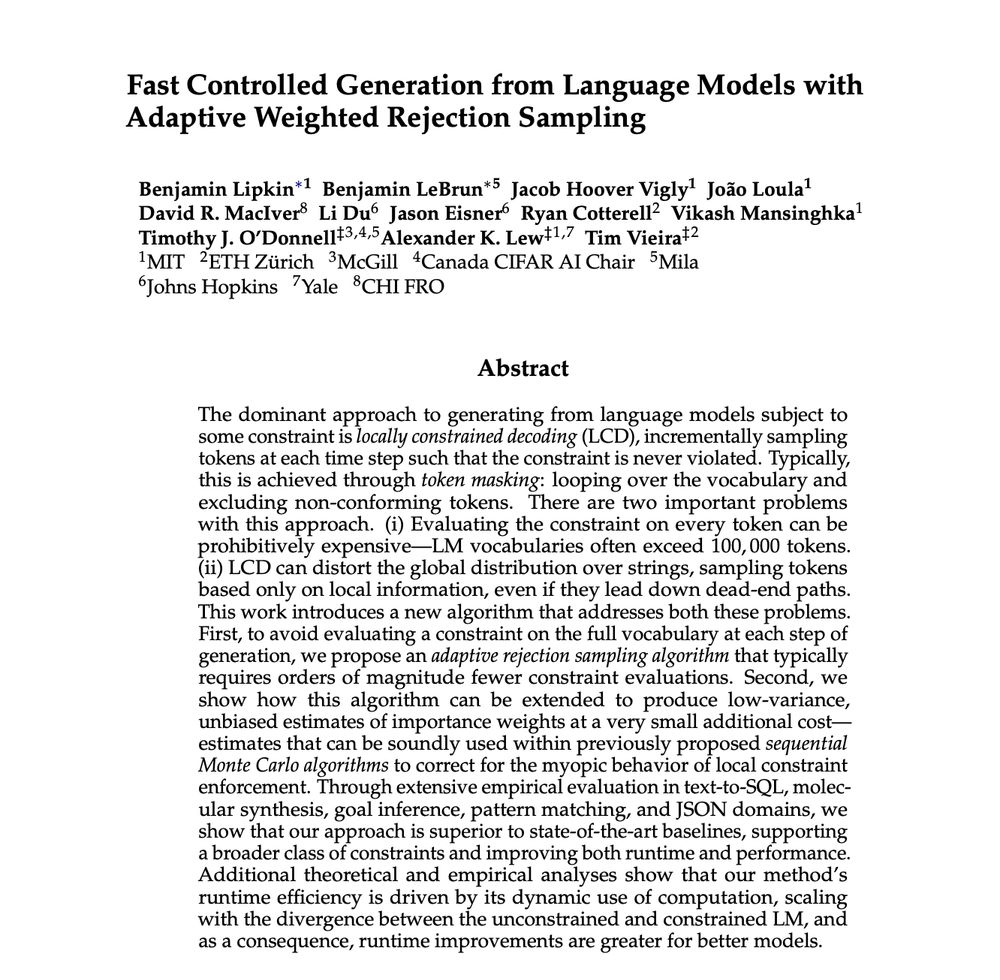Ben Lipkin
@benlipkin.bsky.social
1K followers
280 following
25 posts
phd @ mit, research @ genlm, intern @ apple
https://benlipkin.github.io/
Posts
Media
Videos
Starter Packs
Pinned
Ben Lipkin
@benlipkin.bsky.social
· May 13
Reposted by Ben Lipkin
Reposted by Ben Lipkin
Hope Kean
@hopekean.bsky.social
· Aug 3

Evidence from Formal Logical Reasoning Reveals that the Language of Thought is not Natural Language
Humans are endowed with a powerful capacity for both inductive and deductive logical thought: we easily form generalizations based on a few examples and draw conclusions from known premises. Humans al...
tinyurl.com
Reposted by Ben Lipkin
Ben Lipkin
@benlipkin.bsky.social
· May 13
Ben Lipkin
@benlipkin.bsky.social
· May 13
Ben Lipkin
@benlipkin.bsky.social
· May 13
Ben Lipkin
@benlipkin.bsky.social
· May 13
Ben Lipkin
@benlipkin.bsky.social
· May 13
Ben Lipkin
@benlipkin.bsky.social
· May 13
Reposted by Ben Lipkin
Reposted by Ben Lipkin
Reposted by Ben Lipkin
Colton Casto
@coltoncasto.bsky.social
· Apr 21

The cerebellar components of the human language network
The cerebellum's capacity for neural computation is arguably unmatched. Yet despite evidence of cerebellar contributions to cognition, including language, its precise role remains debated. Here, we sy...
www.biorxiv.org
Ben Lipkin
@benlipkin.bsky.social
· Apr 10
Ben Lipkin
@benlipkin.bsky.social
· Apr 10

Fast Controlled Generation from Language Models with Adaptive Weighted Rejection Sampling
The dominant approach to generating from language models subject to some constraint is locally constrained decoding (LCD), incrementally sampling tokens at each time step such that the constraint is n...
arxiv.org













